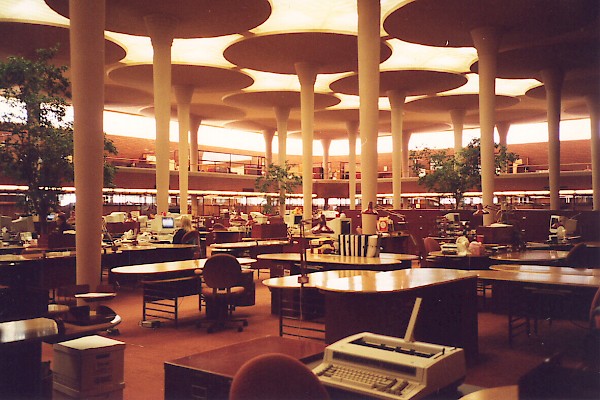The winner of this year’s Pritzker Architecture Prize, Frei Otto (1925-2015) spent his career exploring the connections between manmade and natural construction. He established the Institute for Lightweight Structures in Stuttgart and was a key collaborator on innovative projects such as the West German Pavilion at Expo ’67, the main venues of the 1972 Olympics in Munich, the Mannheim Multihalle, and the Riyadh Diplomatic Club. This event offers reflections on Otto’s contributions to architecture, engineering, and science. Structural engineer and professor of architecture and structural engineering Guy Nordenson and architectural historian and critic Sean Keller will speak about the social and technical significance of Otto's work; a discussion will follow.
Sean Keller (Associate Professor and Director of History and Theory, Illinois Institute of Technology; Ph.D. Harvard University) is a historian and critic of modern and contemporary architecture, with a focus on the relationship of architecture and technology after 1945. His work has been recognized by a Warhol Foundation Arts Writers Grant and the 2009 Winterhouse Award for Design Writing and Criticism. He has been an invited speaker throughout the United States and Europe, has taught at Harvard and Yale universities, and is a trustee of the Graham Foundation for Advanced Studies in the Fine Arts. He is a frequent contributor to Artforum and has written for numerous anthologies and journals, including Grey Room, Perspecta, Journal of Architectural Education, and Art Journal. He has two books forthcoming: Automatic Architecture: Motivating Form After Modernism (University of Chicago Press) and—with Christine Mehring—Munich ’72: Olympian Art and Architecture (Yale University Press).
Guy Nordenson is a structural engineer and professor of architecture and structural engineering at Princeton University. He studied at MIT and the University of California at Berkeley and began his career as a draftsman in the joint studio of R Buckminster Fuller and Isamu Noguchi in Long Island City in 1976. He has practiced structural engineering in San Francisco and New York. In 1987 he established the New York office of Ove Arup & Partners and was its director until 1997, when he began his current practice. In 1994 he co-founded the Structural Engineers Association of New York. He is Commissioner and Secretary of the New York City Public Design Commission. His research project “On the Water | Palisade Bay” won the 2007 AIA College of Fellows Latrobe Research Prize, and was published in 2010 by Hatje Cantz and served as the inspiration for the MoMA workshop and exhibition "Rising Currents" in 2010. His books Seven Structural Engineers - The Felix Candela Lectures was published in 2008 by MoMA and Patterns and Structure in 2010 by Lars Müller Publishers. Nordenson was a recipient of the AIA’s 2009 Institute Honors for Collaborative Achievement Award and is a fellow of the American Academy of Arts and Sciences. Nordenson is also active in earthquake engineering, including code development, technology transfer, long-range planning for FEMA and the USGS, and research. He initiated and led the development of the New York City Seismic Code from 1984 to its enactment into law in 1995. He has been engaged in climate adaptation research and its implementation for New York City as a member of numerous committees and task forces and his research team at Princeton was recently awarded a major grant by the Rockefeller Foundation to develop “Structures of Coastal Resilience” in collaboration with the USACE and coordinating teams from Harvard, City College of NY and University of Pennsylvania.
This program is made possible through the generous support of the Pritzker Foundation. It is presented in partnership with the Art Institute of Chicago’s Architecture + Design Society.





